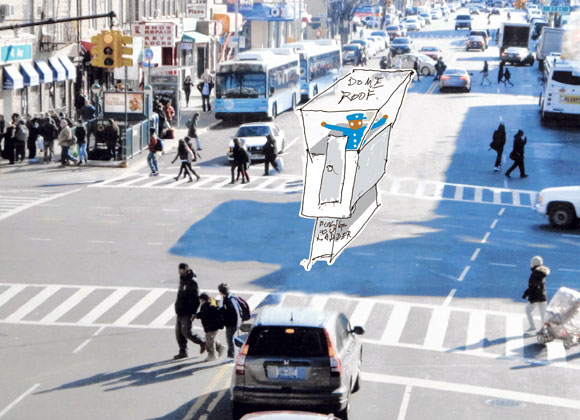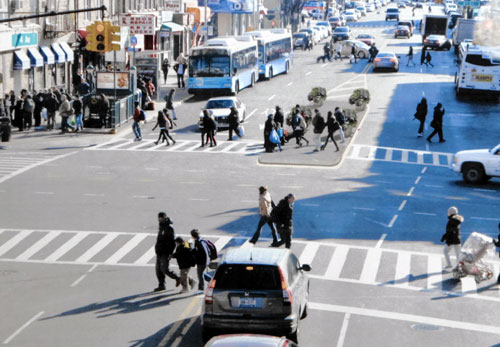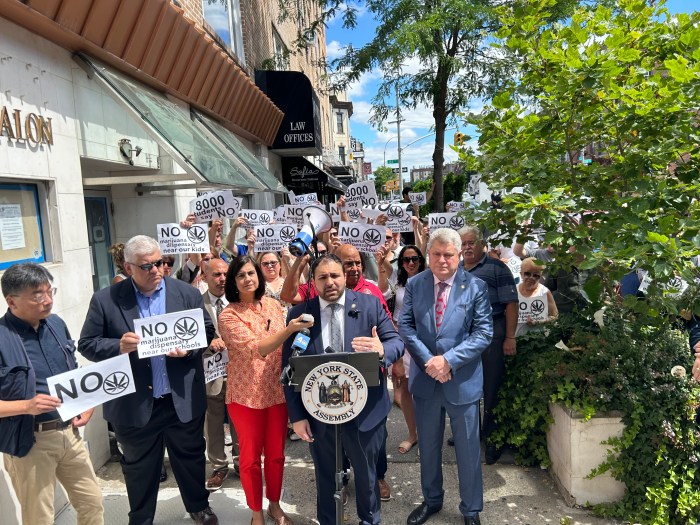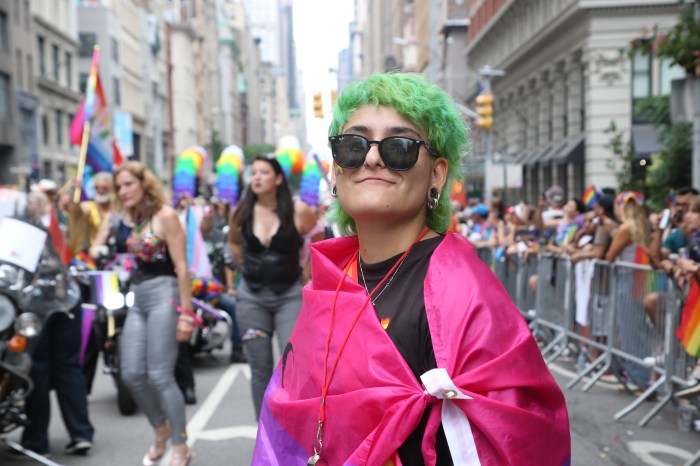Community Board 10 has heard six different proposals over the past three years on how to fix the hazardous 86th Street and Fourth Avenue intersection — site of 66 collisions in 2012 and 2013 alone. Here’s a quick overview:
• The city pitched a plan to fix the crash-prone site in Oct. 2011 by whittling 86th Street from four lanes of traffic down to one in each direction between Shore Road and Fourth Avenue. The proposal also called for banning all left turns onto Fourth, and putting a painted median with planters along 86th Street. The board, fearing the left turn rules would cause gridlock, voted against the recommendations — sending the city back to the drawing board.
• The Department of Transportation came back five months later with a similar proposal that would also strip 86th Street down to one lane each way, paint a 10-foot median at the intersection sans-planters, expand the margins of the roadway to accommodate double-parked cars, and ban left turns from Fourth Avenue onto 86th Street. The panel and Councilman Vincent Gentile (D–Bay Ridge) both came out against the revamp, again worried about increased congestion.
• In June 2012, Community Board 10 voted overwhelmingly in favor a multi-faceted proposal that included banning left-hand turns onto Third and Fourth avenues from 86th Street, stationing a traffic safety agent at Fourth Avenue, placing countdown signs at crosswalks, and staggering traffic lights between Fourth and Fifth avenues. The Department of Transportation agreed to implement all these measures except the traffic cop, which required police department approval.
• In 2013, the city unveiled an ambitious vision for Fourth Avenue based on recommendations from public workshops. The recommended redesign included an elevated island concrete island on the side of the intersection nearest the Verrazano Bridge, a Midtown Manhattan-style pedestrian fence along the side nearest Third Avenue, and a red-painted, bus-only lane next to the fence. The overhaul would also shave the thoroughfare down to a single lane in each direction for 13 blocks between Ovington Avenue and 86th Street, while widening parking lanes. After much public discussion and debate, CB10 rejected the proposal in October, with the exception of the bus lane.
• In response to the Department of Transportation’s 2013 Fourth Avenue plan, CB10’s leading auto advocate Allen Bortnick released a counter-proposal for 86th Street and Fourth Avenue, calling for a seven-foot-high pedestal dead center in the intersection. Atop the pedestal, the Bortnick Plan would mount a booth outfitted with windows looking out in all directions and a switch panel for operating the traffic and walking signals. A police officer would man the controls at all hours, and the vestibule would come equipped with a microphone and speaker system, so the cop could yell at jaywalking pedestrians. Bortnick’s idea failed to win support among other members of the neighborhood panel, and no vote was ever taken.
• The members of the CB10’s traffic and transportation committee agreed in Nov. 2013 that the junction suffered from excessive congestion due to high bus traffic — with the B1, B16, S53, S93, and S79 buses picking up and dropping off 16,000 travelers a day. The panel concluded that part of the problem is that the B1 and S79 buses park on the Fourth Avenue corner for as long as half an hour at a time after completing their routes, and recommended having the buses wait at 95th Street and Fourth Avenue instead before returning to 86th and Fourth to start their routes again. They also suggested having one of the Staten Island buses stop along 86th Street instead of along Fourth Avenue.























